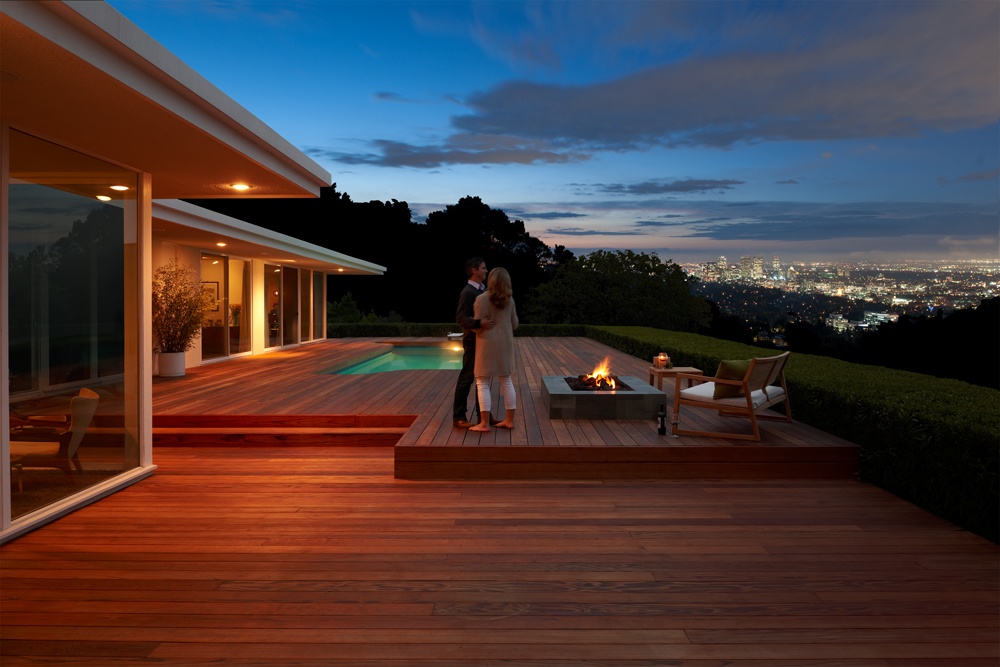
We Found the Perfect Brand of Sustainable Redwood
Beautiful, strong, and affordable, redwood is the iconic building material of the West. Here, Humboldt Sawmill shows how its sustainably grown wood can work for your construction needs.

Kelly Edmondson
The story of redwood is one of beauty and strength. This iconic building material, known for its dramatic hues, is one of nature’s most beautiful and durable. Whether it’s an indoor accent wall or a large-scale exterior siding project, designers, builders, and architects look to Humboldt Sawmill redwood to bring an essence to projects that embodies the integrity of the West.
A Blend of Beauty and Durability

Nicole Katz
It takes one look at a redwood board to see its uniqueness. The tannins that create the namesake reddish hue offer a natural resistance to termites and decay, making this wood a reliable option for outdoor and indoor projects. Redwood’s durability makes it appealing for areas that make an impact, like siding, accent walls, paneling, and other large-scale applications. The wood is gorgeous and hearty—plus its price point and easy installation offer a greater value than other woods, like cedar or ipe, used in similar projects.
A Grade for Every Use

Courtesy of Humboldt Sawmill Company
Humboldt Sawmill offers redwood in a wide variety of grades, providing options to fit most building applications. When grading, the company uses Redwood Inspection Service criteria to consider the wood’s appearance, natural characteristics (such as knots), and resistance to termites and decay. The deeply hued “heartwood” comes from the inner portion of the tree and contains tannins that render it more durable against termites and decay. The “sapwood” grows on the outer layer and has a lighter color and lower resistance.
Keeping these variations in mind is important in choosing a redwood that’s best suited for a project. Heartwood grades may be used in both above-ground and ground-contact applications, such as deck boards (above-ground) and posts (ground-contact), for example. Sapwood grades are best for above-ground applications, including fence boards and interior paneling.
In the Details

Attilio Fiumarella
The variations in color and durability, and thus the differences in grades, are behind redwood’s visual drama. The details captivate, with some grades boasting thick wavy bands of red and others showcasing finer lines and paler tones. Every option is rich with interest, whether for a large-scale accent wall or exterior siding application.
These characteristics prove that redwood is more than its durability. It’s a product that gives a home an unmatched texture, beauty, and alchemy.
Not All Redwood Is Red

Kelly Edmondson
No matter the look you aim for, there’s a redwood option to match it. While heartwood grades naturally range from light pink to deep red, and sapwood boasts creamy yellow tones, all redwood eventually turns a silvery gray when left unstained and exposed to the elements.
This is where stain plays a role. High-quality wood stains, ranging in color, opacity, and transparency, can be applied to protect the lumber from the elements. Depending on the variety selected, a stain can also alter the redwood’s natural color to some extent.
Local Roots

Courtesy of Humboldt Sawmill Company
There is a lot of concern about sustainability and where materials come from, and Humboldt Sawmill takes this seriously. The company harvests redwood from its own company-owned timberlands, which are managed to the highest standards in the world using practices that protect wildlife, water quality, and overall forest ecology. Each year, the company grows more trees than it harvests, creating a building material that is sustainable at its roots. Humboldt Sawmill redwood products are further certified by the Forest Stewardship Council® (FSC® C013133), solidifying its reputation as a best-in-class product.
“Redwood is a great American success story,” says Jessica Hewitt, director of marketing for Humboldt Sawmill. “Professional foresters tend the redwood forests, and the wood is manufactured by employees earning family wages and benefits. It’s something users of redwood can feel very good about.”
